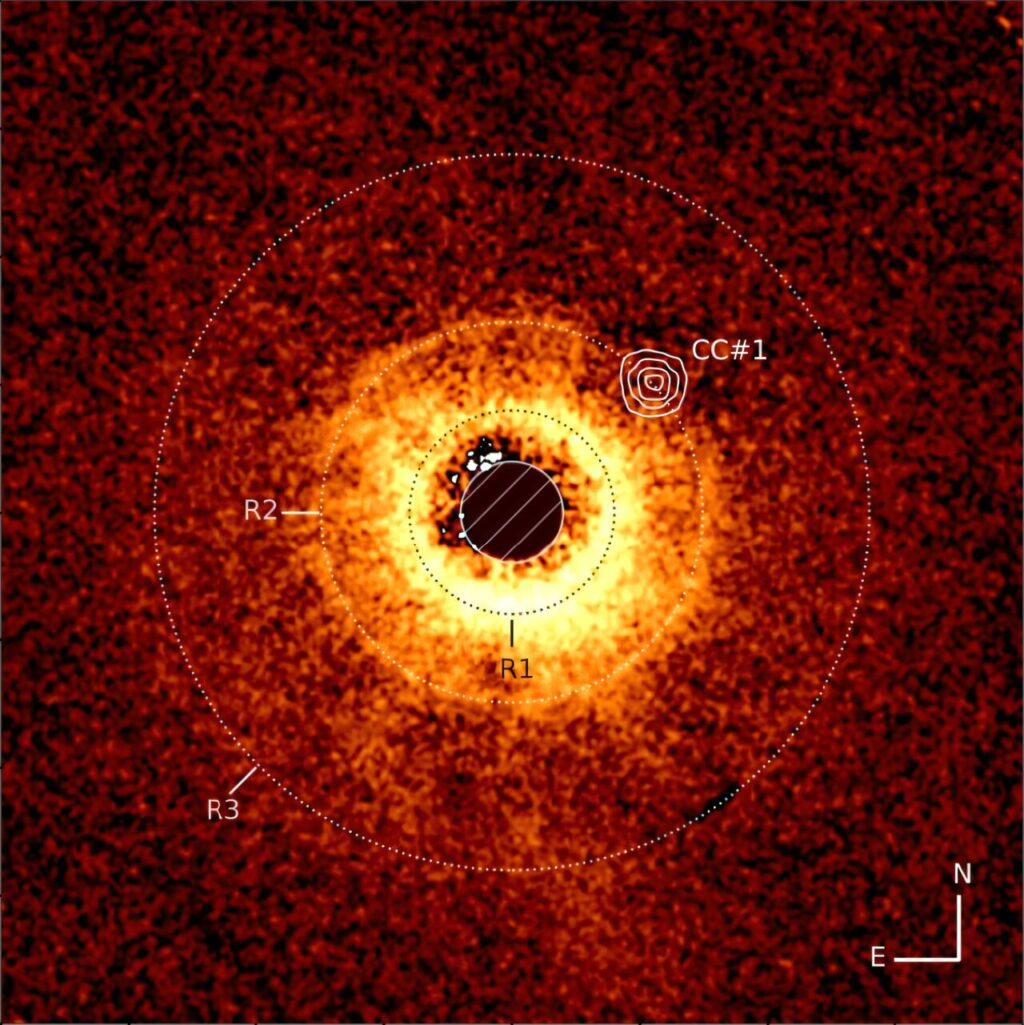
The James Webb Space Telescope has achieved a groundbreaking milestone by discovering its first exoplanet, as announced by astronomers on Wednesday. This discovery marks a significant advancement in the search for planets beyond our solar system, capturing rare direct images of a relatively small world in Earth’s galactic vicinity.
Since its deployment in 2022, the James Webb Space Telescope has revolutionized our understanding of the universe with its unparalleled ability to see farther than any previous telescope. Until now, its primary focus has been on studying known exoplanets to gather critical information such as atmospheric composition. However, the recent discovery of exoplanet TWA 7b, detailed in a study published in the journal Nature, represents a new frontier for the telescope.
Unveiling the Exoplanet TWA 7b
The discovery of TWA 7b is particularly noteworthy because the vast majority of the nearly 6,000 exoplanets identified so far have been detected by the light they obscure when passing in front of their stars, rather than through direct imaging. Anne-Marie Lagrange, the lead study author from the Paris Observatory, emphasized the significance of this achievement, stating that Webb has spent considerable time observing planets that have never been directly imaged before.
“Capturing direct images of faraway planets is difficult because they are very faint due to a lack of heat,” Lagrange explained. “Even worse, we’re blinded by the light of the star they orbit.”
Overcoming Challenges with Innovative Technology
The Webb Telescope has a unique solution to this challenge. An attachment to its MIRI instrument, known as a coronagraph, effectively masks the star, creating an effect similar to a solar eclipse. This allows the telescope’s infrared vision to penetrate the glare and detect the planet.
Astronomers directed the Webb Telescope towards the star TWA 7, located approximately a hundred light-years from Earth. This star, initially discovered by the Hubble Space Telescope in 1999, was identified as a promising target for observation due to its young age of just 6.4 million years and its massive surrounding disk of gas and dust, where planets are believed to form.
Implications for Future Discoveries
The discovery of TWA 7b, a relatively small and cold planet with a mass similar to that of Saturn, underscores the enhanced capability of the Webb Telescope to detect exoplanets via direct imaging. This advancement is crucial in the ongoing quest to find smaller, rocky planets akin to Earth or Mars, which are considered the ultimate targets in the search for habitable worlds outside our solar system.
“Webb has increased the ability to detect exoplanets via direct images by a factor of 10,” Lagrange noted, highlighting the telescope’s enhanced sensitivity.
Looking ahead, astronomers anticipate that the Webb Telescope will continue to identify even smaller planets than TWA 7b. However, capturing direct images of distant worlds similar to Earth will require even more powerful telescopes, such as the Extremely Large Telescope, which is scheduled to become operational in Chile by 2028.
Broader Context and Future Prospects
The discovery of TWA 7b not only adds to our growing catalog of exoplanets but also provides valuable insights into the formation and evolution of planetary systems. By studying a diverse range of planets, astronomers hope to determine whether our solar system, capable of hosting life, is unique in the universe.
Anne-Marie Lagrange expressed her excitement about the potential for future discoveries, stating that she would be thrilled to identify “Earth-like planets” in the years to come. The ongoing advancements in telescope technology and observational techniques promise to deepen our understanding of the cosmos and bring us closer to answering fundamental questions about the existence of life beyond Earth.
For more information, refer to the study by Anne-Marie Lagrange, “Evidence for a sub-Jovian planet in the young TWA 7 disk,” published in Nature (2025). DOI: 10.1038/s41586-025-09150-4.




